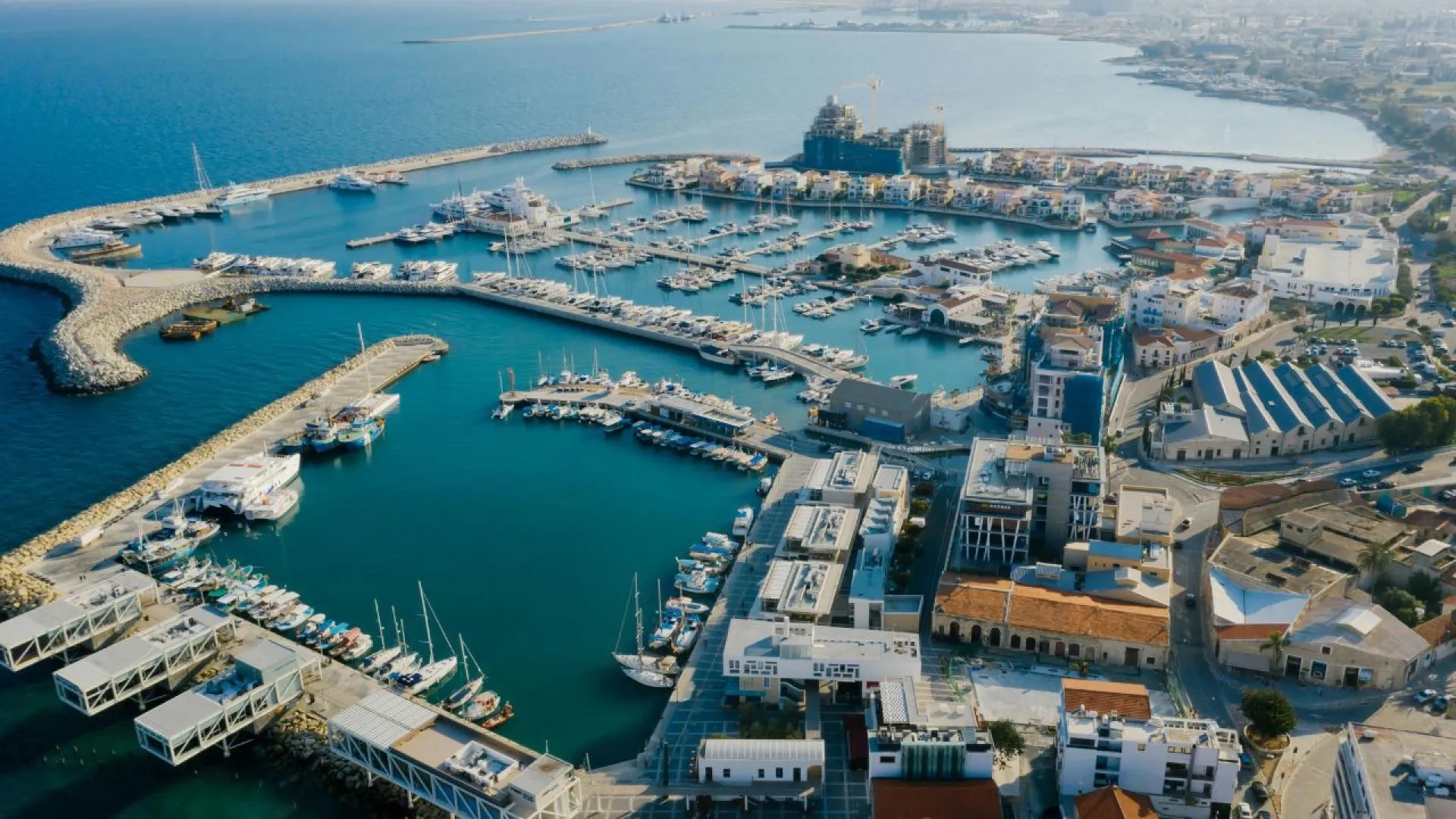




A Langzeiturlaub Zypern—a long-term stay in Cyprus—is the ideal way for many retirees to escape Central Europe’s winters while gaining a noticeable boost in quality of life. But if you plan to spend several months—or even settle for longer—one decision will shape your daily experience more than any other: which region fits your lifestyle best?
Your choice of location affects everything: access to healthcare, everyday shopping, public transport, leisure, and how easily you’ll integrate socially. While familiar names like Paphos or Larnaca often top the list, more and more long-stayers are turning their attention to Limassol, Nicosia and the eastern shore around Ayia Napa and Protaras.
In this guide we examine those three alternatives in depth. We focus on what matters most to retirees: medical security, infrastructure, day-to-day comfort, leisure opportunities, costs, and the all-important question of whether a place truly feels like home over the long run.
Limassol, with roughly 235,000 residents, is Cyprus’s second-largest city and its economic and cultural powerhouse. Life here blends Mediterranean ease with a cosmopolitan, modern environment. For retirees, the city offers outstanding advantages—along with a few challenges worth anticipating.
Limassol stands out for the quality and density of its medical services. The city is home to leading private hospitals such as the Mediterranean Hospital of Cyprus, Ygia Polyclinic Private Hospital, and the internationally respected German Oncology Center. These facilities cover virtually every specialty—from cardiology to orthopedics—using up-to-date diagnostics and treatment pathways. Many physicians trained abroad, speak English, and in some cases German.
Emergency care is available around the clock, and pharmacies are plentiful. For retirees this translates to reassurance: in urgent situations, help is close at hand. Home visits by private nurses and doctors are also feasible—an important safety net for solo travellers or anyone with limited mobility.
When it comes to practical living, Limassol is hard to beat. International supermarket chains (Lidl, Carrefour, AlphaMega) sit alongside fresh produce and fish markets, so you can mix brand familiarity with local value. Daily life stays simple thanks to short distances and a wide range of services.
Mobility is also comparatively smooth. Cyprus overall is car-centric, but Limassol’s city buses reliably link key districts, taxi apps like Bolt work well, and the A1 motorway connects Limassol to Nicosia, Larnaca and Paphos in about an hour. For non-Greek speakers, routine tasks are easier than elsewhere: banks, clinics and public offices frequently offer English-language service—another plus for a stress-free Wohnen auf Zypern.
Culturally, Limassol is one of the liveliest places on the island. The seaside Molos promenade is perfect for long daily walks and casual meet-ups. The Limassol Archaeological Museum, municipal theatres and galleries supply steady variety, while major events—the Limassol Carnival and the September Wine Festival—bring the city to life.
For social integration, Limassol’s international character helps enormously. You’ll find German- and English-speaking meetups, clubs, church communities and interest groups that organise excursions and activities—ideal for building a circle of friends quickly.
All that convenience has a price: Limassol is Cyprus’s most expensive market. A good two-bedroom apartment rarely rents for under €1,200/month, and new builds with sea views command a premium. For retirees on smaller pensions, that can be a stretch.
Traffic during rush hours can also be demanding, and central parking is limited. If you prefer not to drive daily, consider a neighbourhood with bus access—or a quieter suburb with lower rents and easier parking—so your Langzeiturlaub Zypern stays comfortable as well as exciting.
Nicosia (Lefkosia), with more than 300,000 residents, is Cyprus’s largest urban area and its political, economic and cultural centre. It’s not the obvious choice for sea lovers, but for retirees prioritising infrastructure and healthcare, the capital offers distinct strengths.
Nicosia hosts the most comprehensive medical ecosystem in Cyprus. The Nicosia General Hospital, the country’s largest public hospital, covers the full spectrum of specialties and acts as a reference centre for complex cases. It’s complemented by renowned private institutions including Aretaeio Hospital, Apollonion Hospital and the American Medical Center.
The upshot for retirees: fast access to highly qualified specialists—many of whom trained internationally and work in multiple languages. For chronic conditions or specialised treatments, Nicosia is the safest bet. Patients from across the island routinely travel here; living in the capital puts that level of care on your doorstep.
As the seat of government, Nicosia concentrates services: supermarkets, pharmacies, banks and public offices are present in every district, which keeps daily errands short and predictable. If you need to handle residency, tax or documentation matters, the process is typically more straightforward here than in smaller towns.
Public transport is solid. Intercity buses link Nicosia with Limassol, Larnaca and Paphos, while city routes reach most neighbourhoods. Cyprus remains car-oriented, but among the island’s regions, the capital is one of the few where getting around without a car is genuinely feasible.
Nicosia is the island’s cultural heart. The Cyprus Museum houses one of the Mediterranean’s most important archaeological collections, complemented by the Byzantine Museum and a lively gallery scene. Concerts, theatre and festivals fill the calendar, making it easy to maintain an active cultural routine.
The historic centre is uniquely shaped by the city’s division. A walk along Ledra Street and across the Green Line offers a rare window into Cyprus’s recent history—many retirees find this depth of context enriching. Thanks to embassies, universities and international organisations, English is widely spoken and community life is diverse; language classes, clubs and events make integration straightforward.
Rents in Nicosia are modest compared to Limassol. A well-located two-bedroom apartment typically costs €600–800/month, with lower prices on the outskirts. For retirees who can forego daily beach walks, this combination of affordability and high service density is compelling.
One caveat: summers in Nicosia run hotter than the coast, and 40°C days are not unusual. Winters, however, are mild with little rain—ideal for a long-stay outside peak heat. The sea is about a 45-minute drive away; for wintering retirees, that trade-off often makes sense.
Cyprus’s east coast, anchored by Ayia Napa and Protaras, is famed for its beaches. In summer it’s a tourism hotspot; in the off-season it shifts into a calm, retiree-friendly area. For a Langzeiturlaub Zypern, the region blends rest, nature and an international community—especially attractive from autumn to spring.
From October to April, Ayia Napa feels entirely different from high summer. The nightlife quiets, and a relaxed rhythm returns. Many hotels court long-stayers with compelling packages—often including cleaning, laundry or even half-board—so day-to-day living becomes delightfully simple.
Temperatures typically range 15–20°C with plenty of sunshine and few rainy days, perfect for coastal walks and easy hikes—or simply sitting by the sea. Crucially, core tourist infrastructure (doctors, pharmacies, supermarkets) remains available through winter, so practical life continues smoothly.
Healthcare across the area is solid. The Famagusta General Hospital in Paralimni—minutes from Ayia Napa—covers emergencies and regular care. Private GP and dental clinics operate year-round, and English-speaking staff is the norm.
Daily shopping is uncomplicated: supermarkets, smaller stores and weekly markets are well distributed. Protaras is notably flat and walkable, which makes errands and seaside strolls easier for older adults. Public buses connect Ayia Napa, Protaras and Paralimni, providing mobility without a car.
This coastline hosts some of Cyprus’s finest beaches. Nissi Beach is known for its turquoise water; Fig Tree Bay often ranks among Europe’s best. In the off-season you’ll enjoy them almost to yourself—an excellent perk for retirees seeking peace.
Nature lovers will gravitate to the Cape Greco National Forest Park, with well-maintained trails, striking limestone formations and sea caves—gentle exercise with big scenic payoffs. Socially, the east coast has a strong international winter community, especially from Scandinavia and the UK, so it’s easy to meet peers via language classes, meet-ups and group outings.
Housing is generally more affordable here than in Limassol or Nicosia. Furnished apartments commonly rent for €500–700/month, while long-stay hotel packages with half-board often fall between €900 and €1,200/month. For retirees prioritising comfort and simplicity—without housework—those bundles are compelling.
The trade-off is seasonality: many restaurants and shops close in winter, and cultural programming is lighter than in the big cities. If you prioritise nature, quiet and an easygoing social scene, though, Ayia Napa and Protaras are excellent long-stay bases.
Each region has distinct strengths. The right choice depends on your priorities: tranquility and nature, top-tier medical access, cultural variety—or a careful balance of all three.
All three regions provide dependable care, but the emphasis differs.
Limassol offers multiple modern private hospitals and specialist centres—excellent for quick access to advanced diagnostics and treatment.
Nicosia is the national medical hub: the most comprehensive public and private coverage, ideal for chronic conditions and specialist pathways.
Ayia Napa/Protaras relies on the Famagusta General Hospital plus local clinics—fully adequate for routine needs, but less dense than the cities.
Bottom line: For maximum medical security, choose Nicosia; for internationally oriented private care, Limassol shines; healthy retirees with standard needs do well on the east coast.
Daily convenience shapes long-term quality of life.
Limassol leads with the most modern infrastructure—international retail, services in English, workable bus coverage and excellent highway links.
Nicosia excels in administration: if you need to handle permits, taxes or official paperwork, the capital streamlines the process.
Ayia Napa/Protaras works smoothly in winter; in summer it becomes tourist-heavy and noisier.
Bottom line: For consistently high everyday comfort, Limassol is best. If administration and short errand routes matter most, Nicosia excels. The east coast suits those who enjoy seasonal quiet and simple routines.
Leisure is a core part of Wohnen auf Zypern in retirement.
Limassol is outgoing and international, with events, museums and an easy path to new friendships.
Nicosia is the cultural treasury—museums, theatres and historic quarters for curious minds.
Ayia Napa/Protaras prioritises nature and gentle activity—walks, beaches and a sociable winter expat scene.
Bottom line: Culture fans gravitate to Nicosia; sociable, active retirees thrive in Limassol; nature-seekers and peace-lovers feel at home on the east coast.
Finances matter.
Limassol: highest rents, best modern stock—ideal if budget allows.
Nicosia: significantly cheaper; €600–800 secures a good two-bedroom flat.
Ayia Napa/Protaras: most affordable overall—€500–700 for furnished apartments or €900–1,200 for hotel long-stay packages with half-board.
Bottom line: Choose Limassol with a stronger budget; opt for Nicosia or the east coast for value without sacrificing essentials.
A Langzeiturlaub Zypern opens up a world of options—but picking the right region determines how enjoyable your months on the island will be. Limassol, Nicosia and the east coast (Ayia Napa/Protaras) each cater to different priorities, and each can be “right” depending on the life you want to live.
Limassol – for active retirees with higher standards.
Modern infrastructure, international buzz and rich cultural life make Limassol perfect if you don’t want to compromise on comfort and community—and you’re comfortable with higher rents.
Nicosia – for culture lovers and those prioritising healthcare.
The capital combines the island’s strongest medical network with year-round cultural depth. It’s inland and hot in summer, but for winter long-stays and practical administration, it’s an excellent value choice.
Ayia Napa & Protaras – for peace-seekers and nature lovers.
In winter the east coast is quiet, sunny and affordable. International retiree communities offer easy social ties; beaches and the Cape Greco park keep you moving and relaxed. If you can live with lighter cultural programming, it’s a superb long-stay base.
In short:
Limassol: expensive, modern, international—ideal for premium comfort.
Nicosia: culturally rich, medically leading—great for the health- and culture-focused.
Ayia Napa/Protaras: calm, nature-driven, budget-friendly—best for beach-and-community lifestyles.
A long stay in Cyprus isn’t just a way to skip winter—it’s a chance to shape retirement actively, healthily and with real enjoyment. Decide whether comfort, culture or calm matters most to you. With clear priorities, Cyprus becomes more than a destination—it becomes a second home.
We use necessary cookies including analytics to ensure our website works properly and to understand how to improve your experience. By continuing to browse, you accept our use of necessary cookies. Click "Accept All" for personalized content and offers.